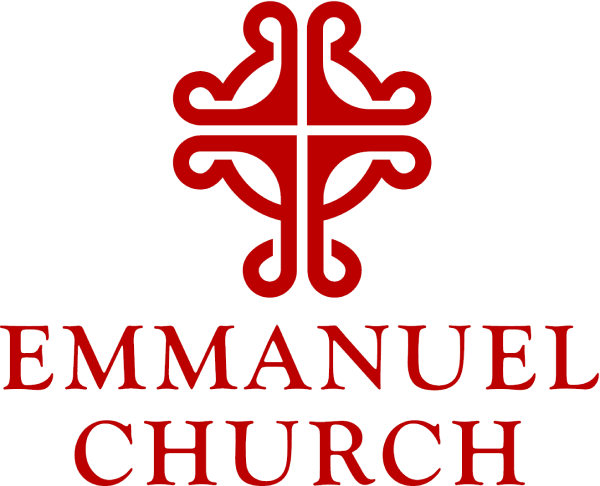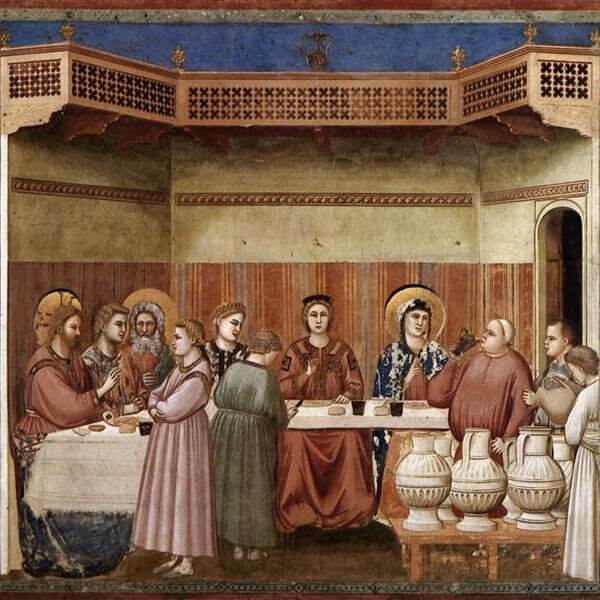
Sermon for the Third Sunday in Lent
Dear Friends. It is such a pleasure to be with you again as we continue our Lenten journey together. Today we enter one of the most dramatic scenes in the New Testament as Jesus confronts the authorities in the Temple at Jerusalem. In John’s gospel we are immediately and viscerally drawn into the great mystery of Jesus of Nazareth. Jesus comes, not as an infant, not as one who is descended down the long genealogy from David. Jesus arrives as the incarnate Word of God. ‘The Word becomes flesh and lives among us.’(Jn 1:14) We enter the mystery of Jesus through the miracles and signs he performs in the pages of John.
And the authorities demand of Jesus: “What sign can you show us for doing this?”
 During the early years of the Second War in Europe, the English are convinced that a German invasion is imminent. In 1940 they mobilize to defend their Island Home against the day when the inevitable occurs. A Home Guard is activated. Defense installations, pillboxes and artillery emplacements are erected along the coastline. Thousands of miles of anti-tank ditches are dug. Most important, road signs and mileposts are removed. So, once ashore, the invading army does not know where they are, or where they are to go.
During the early years of the Second War in Europe, the English are convinced that a German invasion is imminent. In 1940 they mobilize to defend their Island Home against the day when the inevitable occurs. A Home Guard is activated. Defense installations, pillboxes and artillery emplacements are erected along the coastline. Thousands of miles of anti-tank ditches are dug. Most important, road signs and mileposts are removed. So, once ashore, the invading army does not know where they are, or where they are to go.
Can you imagine being lost in a foreign place with no sign to guide you? I recall my early travels to Japan. There are no signposts in English. The only way to order a meal is to point to a picture on the menu. The only English language sign I encountered was in the subbasement of the vast Tokyo Station. There I came to the sign directing me to the airport railway… that would carry me home.
Demand for a Sign
Today, in the Temple, the religious authorities find themselves confronted as though in a foreign land. And so they demand of Jesus:
“What sign can you show us for doing this?”
Before joining the scene of Jesus disturbing the Temple, let’s step back just a few verses to the Wedding In Cana. The Wedding and the Temple offer clues to the glory of God through the signs and miracles Jesus performs. In the miracle of changing water to wine, Jesus offers the first of the signs that the religious authorities demand…but fail to see. Note that in the Greek text, the Greek word for sign and the Greek word for miracle is the same.
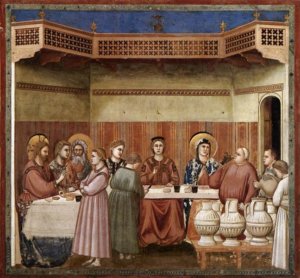 Jesus arrives at the wedding as a guest. He is told: ‘they have no wine.’ A social disaster! Jesus turns to the servants. He directs them to fill the six large stone jars standing nearby with water. The wine steward, who has not witnessed the transformation, then tastes the water. He discovers the water, all 120 gallons of it, has been transformed into wine. The steward then congratulates the bridegroom: “everyone else serves a portion of good wine first, then drags out the cheaper stuff later, when the guests are drunk. But you have reserved the finer wine until now.”
Jesus arrives at the wedding as a guest. He is told: ‘they have no wine.’ A social disaster! Jesus turns to the servants. He directs them to fill the six large stone jars standing nearby with water. The wine steward, who has not witnessed the transformation, then tastes the water. He discovers the water, all 120 gallons of it, has been transformed into wine. The steward then congratulates the bridegroom: “everyone else serves a portion of good wine first, then drags out the cheaper stuff later, when the guests are drunk. But you have reserved the finer wine until now.”
Those with eyes to see and ears to hear should catch on to the sign that Jesus performs. In converting the water traditionally used for Jewish purification at the wedding, Jesus introduces wine as God’s new covenant. Through wine, Israel will be purified in a whole new way. The huge quantity of wine reveals the extravagance of love and the abundance of life God offers. Congratulated as the bridegroom who reserved the finest wine until the end, Jesus is acknowledged as the author of this miracle. “The water recognized its creator in Jesus and blushed.”[i]
Through such signs and miracles Jesus reveals himself as the Glory of God; that is, he reveals God’s presence in him.[ii] It allows us to see Jesus’ glory through the eyes of the disciples, who are standing nearby and, with them, believe.[iii]
Cleansing the Temple
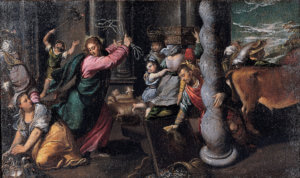
But the miracle in Cana is only the beginning. (Jn 2:11) Jesus then departs Cana and heads up to Jerusalem for Passover. Now he confronts the retailers and money changers in the Temple. We are so familiar with this story. It is told in all four gospels and presents Jesus as hopping mad. Here Jesus is in action, overturning tables of the money changers, whipping the sacrificial beasts out of the Temple. We can almost hear their coins clattering on the marble floor. And hear the complaints of the sheep and lowing of the cattle as they are whipped out. “Stop making my Father’s house a house of trade! Jesus cries.” Whose house? My Father’s house! Until this moment, we thought this was the temple of YHWH! In this, Jesus reveals he is the Son of God. Oddly, no one reacts.
Why is Jesus so outraged? The Temple is the beating heart of Judaism, not just a church on a street corner. It is the place where Israel’s God, YHWH lives in the midst of the people. Yet access to YHWH must be bought from the Temple merchants. Israel’s God is honored and worshipped through the sacrifice of other living creatures. The Father’s house is corrupted by commercialism
At the Temple, as in Cana, Jesus reveals God’s new covenant. As the Word made flesh, Jesus is the true temple where the glory of God resides.[iv] As the scene unfolds, Jesus foretells God will be glorified through his death and resurrection. A few chapters on, the religious authorities will challenge Jesus’ authority with the question: “Who do you make yourself to be?” (Jn 8:53) This morning they challenge him: “What sign can you show us for doing this?” Jesus establishes his authority now as he foretells his crucifixion and resurrection: If you “destroy this sanctuary,” referring to his body, he tells them, “in three days I will raise it up.”
Worldly Wisdom Does Not Lead to the Kingdom of God
In these words Jesus lifts us beyond a worldly, commercial dispute. In Jesus, God seeks a deeper level of sacrifice than the slaughter of sheep, cattle and doves. On the cross, Jesus shows that worldly wisdom does not lead to the Kingdom of God. Jesus calls for the personal sacrifice of our spirit within the temple of our body. Paul tells the self-centered Corinthians that God has made foolish the wisdom of the world. If you wish to find eternal life, you must die to yourself. This is the message of the cross, the scandal of Jesus Christ.[v] St. Paul says: “We preach Christ crucified. Religious people seek a visionary experience. Secular people require proofs, demonstrations.[vi] Thus the shame of the cross itself is a stumbling block to Jews and folly to the Gentiles. But to all who are called, to all who accept the message of the cross, both Jew and Gentile, is shown the power and wisdom of God. (1 Cor 1:23–24)
The Gospel of John reveals many signs and miracles for us believers. Water into Wine. The foretelling of the Crucifixion at the Temple. The healing of the royal official’s son in Capernaum. The feeding of the five thousand. And the many other miracles performed in the presence of his disciples which are not written in this book. (Jn 20:30) And, finally, we are given the sign, the inscription on the cross, written in the three languages of the known world for all to see and understand: INRI, Jesus of Nazareth, King of the Jews.
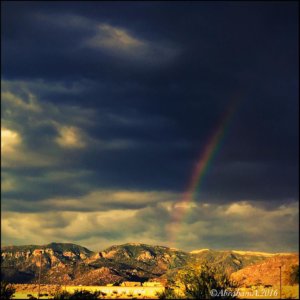 As with the Corinthians, in our faith we must wrestle daily with the foolishness of our worldly wisdom. Daily we seek assurance of things hoped for in our conviction of things not seen. (Heb 11:1) We are not mystics. We seek signs to help us stay the course, to encourage us, to remind us of the presence of God in our life. The signs are there for us to see, if we stay tuned. Daily we are witness to the unexpected act of kindness from a stranger. The stunning revelation of the beauty of God’s creation. The rainbow following the storm. The vastness seen from the north rim of the Grand Canyon. The freshness of a mountain stream on our climb to a Catskill peak.
As with the Corinthians, in our faith we must wrestle daily with the foolishness of our worldly wisdom. Daily we seek assurance of things hoped for in our conviction of things not seen. (Heb 11:1) We are not mystics. We seek signs to help us stay the course, to encourage us, to remind us of the presence of God in our life. The signs are there for us to see, if we stay tuned. Daily we are witness to the unexpected act of kindness from a stranger. The stunning revelation of the beauty of God’s creation. The rainbow following the storm. The vastness seen from the north rim of the Grand Canyon. The freshness of a mountain stream on our climb to a Catskill peak.
Let us commit ourselves, then. As we travel our remaining days until Holy Thursday let us seek to be that example, to be that sign through which others may see the presence of God in their lives.
Amen
Works Referenced:
This is a sermon delivered to the congregation of Emmanuel Church, Newport, RI on March 7, 2021. I am indebted to the following for their insights into the lectionary for Third Sunday in Lent: The New Oxford Annotated Bible, Oxford University Press (1994), footnotes p. NT 127; J.Ramsey Michaels, The Gospel of John, Eerdmans (2010); NT Wright, John for Everyone, Part I (2004), Kindle edition; Ravi Ravindra, The Gospel of John in the Light of Indian Mysticism, Inner Traditions (2004), Kindle edition; Fleming Rutledge, The Crucifixion, Eerdmans (2015)
Roger C. Bullard, March 7, 2021
[i] Attributed to poet Richard Crashaw (c. 1613 – 1649)
[ii] Oxford (footnote p 127 NT)
[iii] Michaels, p 155
[iv] NT Wright, p 24-26 Kindle
[v] Ravindra, Location 3418
[vi] Rutledge, p 84-87
